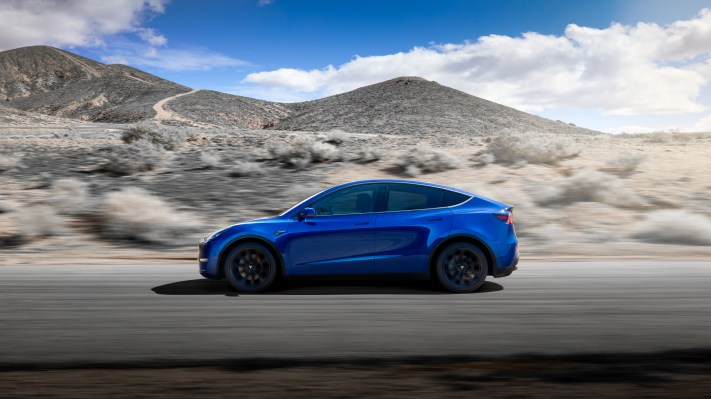Tesla will start delivering Model Y and Model 3 vehicles without radar to customers in Europe and the Middle East, a continuation of the company’s plans and CEO Elon Musk’s desire to only use cameras combined with machine learning to support its advanced driver assistance system and other active safety features.
Tesla first started to build its Model 3 and Model Y vehicles without radar in May 2021. Those vehicles were solely for the North American market. The company said in an update on its website that it will begin delivering its camera-only Model Y and Model 3 vehicles for Europe and the Middle East this month.
The vehicles may be delivered with some functions temporarily limited or inactive, including a feature that keeps it within its lane, the company said. The feature, called Autosteer, will be limited to a maximum speed of 80 mph and a longer minimum following distance. Tesla will slowly restore features via a series of over-the-air software updates in the weeks ahead. All other available Autopilot and Tesla Full Self-Driving features will be active at delivery, depending on order configuration.
Tesla’s decision to stop using the sensor is a departure from the industry standard. Automakers typically use a combination of radar and cameras to provide the sensing required to deliver advanced driver assistance system features like adaptive cruise control, which matches the speed of a car to surrounding traffic, as well as lane keeping and automatic lane changes. Some automakers such as Mercedes-Benz and Volvo have even added a third sensor called lidar, or light detection and ranging sensor, to provide redundancy in ADAS systems.
The move toward more — not less — sensors has been where most automakers are headed. Tesla, and its chief executive Musk, are the contrarians.
Musk has long touted the potential of its branded “Tesla Vision” system, which only uses cameras and so-called neural net processing to detect and understand what is happening in the environment surrounding the vehicle and then respond appropriately.
Neural nets are a form of machine learning that work similarly to how humans learn. It is a sophisticated form of artificial intelligence algorithm that allows a computer to learn by using a series of connected networks to identify patterns in data.
Many companies developing autonomous vehicle technology for robotaxis or self-driving trucks use deep neural networks to handle specific problems. But they wall off the deep nets and use rules-based algorithms to tie into the broader system. These AV developers also use a combination of camera, radar and lidar to provide redundancy to the system.
